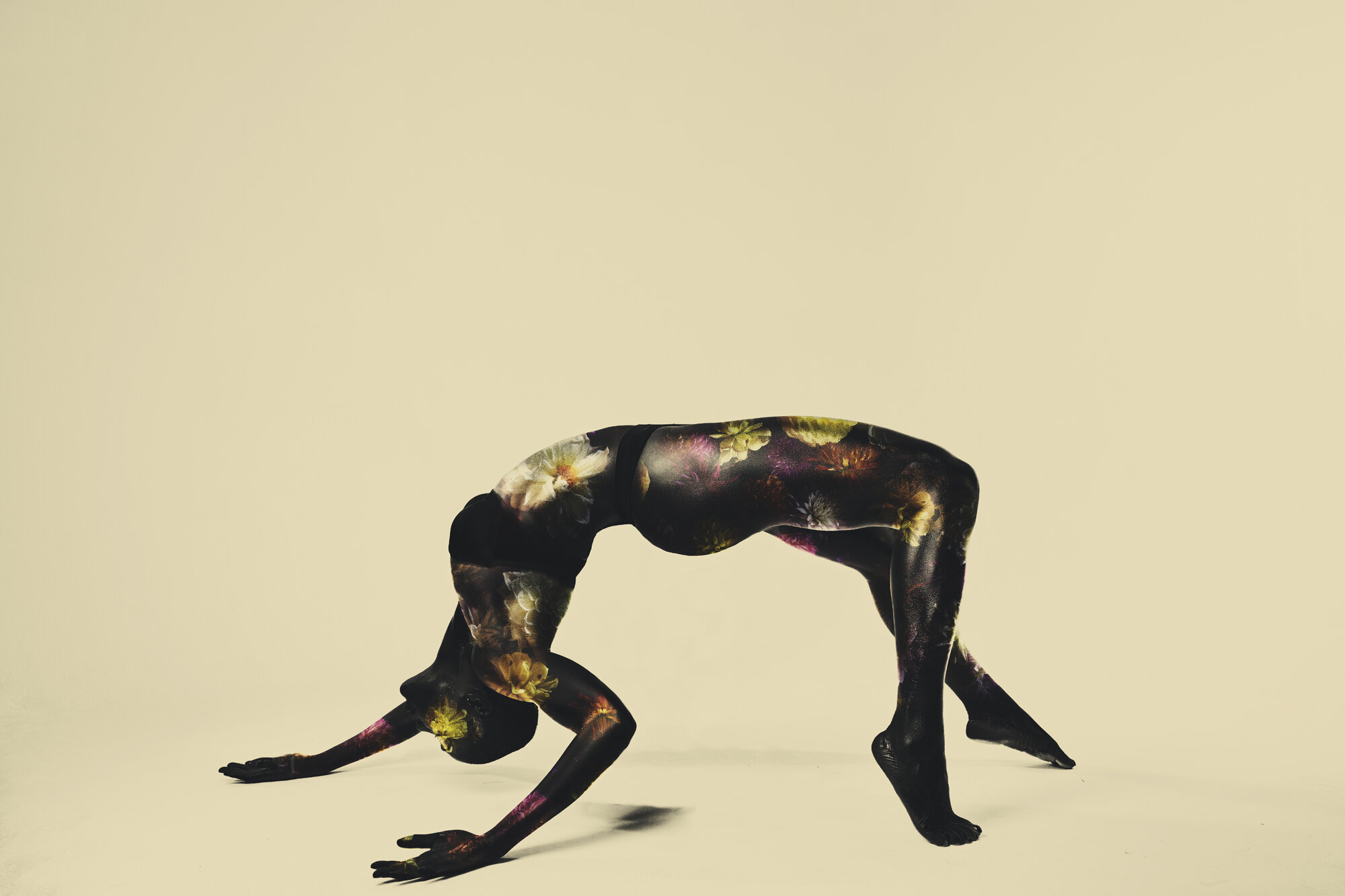Àsìkò: Conversations
Àsìkò is a British-Nigerian photographer whose artistic work reflects an on-going exploration of his multi-layered cultural heritage, encompassing ideas of tradition, spirituality and gender, and manifests in highly conceptual photographs that interweave elements of fantasy and realism. His 2018 body of work, entitled "Conversations", stems from a personal desire to investigate the history and emotional repercussions of FGM (female genital mutilation). The resulting images are powerful celebrations of the Black female body, combining a compositional simplicity with ornamental flowers and jewellery that suggest an expressive and symbolic significance.
Àsìkò's first encounter with the practice of FGM was in 2016, when a work colleague disclosed her personal experience with the procedure at the tender age of 13. The shock of discovering the widespread nature of the practice — it is estimated that up to 200 million women alive today have undergone some form of the procedure — and the indignation at this form of violence against women, prompted Àsìkò to visually represent the emotional gravity of this aspect of his own heritage. Reacting against this enduring remnant of a patriarchal system — which has, in the eyes of many, hidden behind arguments of tradition and deeply-rooted culture as a means of maintaining the practice's continuance into contemporary times — his photographs instead redirect the narrative to explore the delicate issues in a more abstract, expressive manner.
On his use of natural elements, Àsìkò states, "I use plants and flowers as symbolic expressions of culture, representing beauty, fragility and destructive power, likened by the role of culture in male dominated societies." His highly stylized images, which employ a limited colour palette to enhance the bursts of vivid floral hues, imbue the bodies within them with an incandescent light that simultaneously represent empowerment and fragility. The photographs embody Àsìkò's enduring fascination with the beauty and power of the female body, which remains a stong focal point in his artistic practice — as an aesthetic study, as well as a consideration of the intersection between the female body and African culture.









